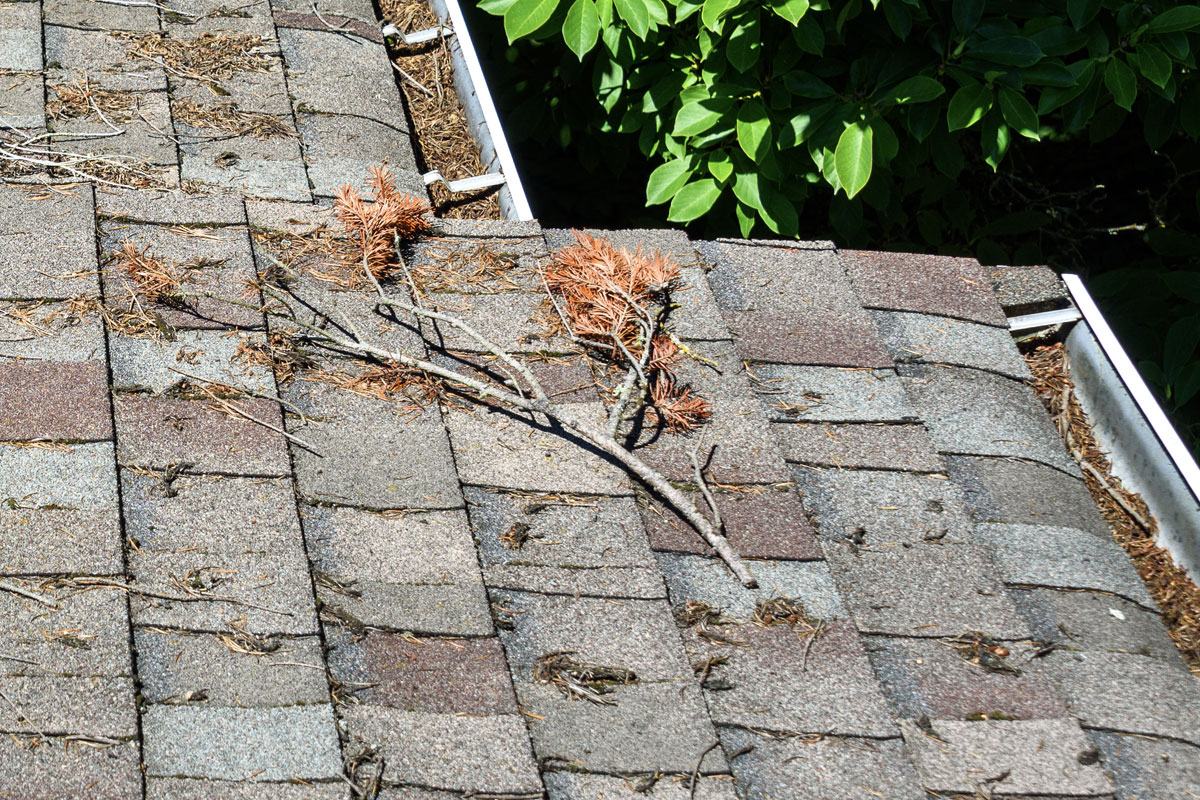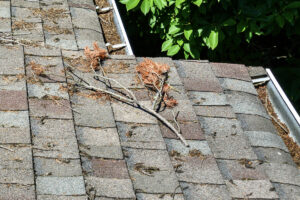
Fall is the Perfect Time to Check Your Roof
Is your roof on your fall home maintenance checklist?
 Did you know that 1% of the value of your home should be set aside annually to cover the costs of emergency home repairs (Williams, 2022). Of course, there are variables that impact how much you should set aside, such as size and age of home, but at least it’s a goal for many homeowners who don’t want to be caught off guard by high costs associated with unexpected repairs. Emergency home repairs account for 51% of all home repairs costs (iProperty) and the average homeowner spends just over $3100 per year on maintenance and repairs (iProperty).
Did you know that 1% of the value of your home should be set aside annually to cover the costs of emergency home repairs (Williams, 2022). Of course, there are variables that impact how much you should set aside, such as size and age of home, but at least it’s a goal for many homeowners who don’t want to be caught off guard by high costs associated with unexpected repairs. Emergency home repairs account for 51% of all home repairs costs (iProperty) and the average homeowner spends just over $3100 per year on maintenance and repairs (iProperty).
Roof repairs are among the top 10 most expensive unexpected costs. “The cost of roof repairs is highly dependent on the construction material as well as the extent of the repairs (iProperty)”. Roofing materials are rising by as much as 20% (Roofcalc.com).
That means it’s time to get out there and check your roof. Here are some tips for homeowners who want to conduct a thorough – and safe – visual roof inspection.
Pro Tip – Homeowners often ask us if it is necessary to get on a ladder in order to inspect the roof. Our answer? No! Grab a pair of binoculars and conduct a visual roof inspection with two feet planted safely on the ground!
- Exterior: know what you are looking for: Before you begin your visual roof inspection, know the signs of a roof in distress. These include missing or torn shingles, shingle granules on the ground, sagging or broken gutters, moss growth, exposed nail heads, and any bowing in any portion of the roof – even the smallest degree.
Pro Tip – We recently had a homeowner ask us about using a drone to conduct a visual roof inspection. Our answer? If you have one, why not! This is a great option if your roof is too steep, you do not want to use a ladder, or are just not confident in conducting a visual inspection from the ground floor alone. If you have a drone, live in an area where it’s acceptable to fly one, and want to gain a bird’s eye view of your roof, go for it!
- Interior: know what you are looking for: Water stains on the ceiling and walls are the most prominent internal signs that a roof is failing that you will notice when conducting an interior inspection. But you also want to consider that increases in moisture inside your home (which can manifest as moisture droplets on walls, windows, and floors) can also be a sign that your roof needs professional attention.
Pro Tip – Ready to call a roofer about your findings? Take a photo and then make that phone call! We find that customers are better able to describe the problem they’ve unearthed when they are able to reference the issue during our initial call. But more importantly, having that initial photo allows you – and us – to see if the problem is quickly progressing. This is especially true of interior signs of roof failure and water stains!
- Pay close attention to silent signs of roof failure: Most of us know that when we inspect a roof, we should look for cracked or buckled shingles. And, many homeowners can easily identify moss. But, algae is much more difficult to identify. In fact, we find that homeowners are far more willing to dismiss the signs of algae as something that is a normal part of a roof’s aging process.
Algae appears as dark spots on shingles or streaks on your roof. Most homeowners think these streaks or spots are dirt. Nine times out of 10, it’s actually algae, a silent killer that will accelerate the deterioration of your roof.
Pro Tip – Don’t reach for your hose … or power washer … just yet. Once you realize you have algae on your roof it’s tempting to take care of it yourself. Stop! Call a roofer and ask for a roof inspection before you do anything. We’ve had homeowners wash away evidence of a failing roof when in reality, a professional assessment was needed. It may be more cost-effective for a roofer to make a spot repair on your roof to address the algae-affected area than to replace an entire roof if the problem is allowed to fester … or if bigger problems are lurking elsewhere!
- Gutters need inspections too! If you’re taking time to inspect your roof, it makes sense to consider the health of your gutters as well. Weeds and grass and mini-trees growing out of a gutter are an obvious sign there’s a problem (we’ve all seen gutters like this, right???!!!). Sagging or bowing gutters, gutters that sit at a downward slanting angle (away from the house toward the yard), cracks and missing hardware are easy-to-see signs that your gutters need attention. And don’t forget to make a point to check for water pooling around your home the next time it rains.
Pro Tip – Don’t forget to check your plumbing vent boot. The pipe that helps vent moisture from your home is an often overlooked but very important part of a roof inspection. Look for cracks, missing nails, broken shingles – any sign that there is stress on the base of your plumbing vent boot.
Remember: An ounce of prevention is worth a pound of cure. With the cost of gas, utilities, and groceries on the rise, the last thing you want is to pay for expensive, unexpected home repairs. Save yourself a little money today by conducting a visual roof inspection.
Most expensive home repairs. iPropertyManagement.com.
Why Roofing Prices Keep Going up in 2022. Why Roofing Prices Keep Going Up In 2022 | RoofCalc.org
Williams, T. (2022, March 8). Rule of thumb: How much to budget for home maintenance. The Balance.

